Florida Springs by Jason Gulley
The US state of Florida boasts more than 1,000 springs. Most of these springs discharge crystal clear groundwater from the porous limestone bedrock that makes up the Floridan aquifer – one of the most productive and spring-dense aquifers globally. These springs’ future is threatened by increasing groundwater consumption needed to slake the thirst of a growing population and expand agricultural industry and pollution from septic tanks, farm animal waste, and fertilizer. Over the last several decades, water flow from some springs has slowed to a trickle, and thick blankets of hairy algae have smothered the native vegetation in most springs.
I’ve witnessed the slow death of Florida’s springs over more than two decades of cave diving and spent the last 10 years studying Florida’s springs as a geology professor. While my research has improved my academic understanding of springs, I’ve gradually realized that writing another research paper doesn’t help the public understand Florida’s springs or inspire them to care about the slow-moving environmental catastrophe they’re facing. Regular people don’t read or understand academic papers. The average citizen doesn’t have an emotional reaction to a graph. But most people, scientists included, are captivated by engaging pictures. In 2019, I decided to combine my passions for environmental research and photography to take pictures and write captions that help people learn about Florida’s springs and the creatures that depend on them.
I shoot underwater with a Nikon Z6 in a Nauticam housing with a 230 mm glass dome. I use Nauticam’s 45-degree viewfinder to make it much easier to view the EVF while maintaining horizontal trim, which is essential for cave work. I have a strong preference for rectilinear lenses, and the Nikon Z 14-30mm f/4 has been my go-to choice underwater. I’ll break out my Nikon Z 24-70 f/4 or my Sigma 15mm f/2.8 fisheye lens on rare occasions. I’m not a big fan of fisheye distortion, and I have to focus this lens manually on the Z6, so I typically only use the Sigma if there is a chance that I’ll be shooting over-under shots on the surface. I experiment quite a lot with longer shutter speeds (up to several seconds) to create motion blur, both inside caves and on the surface. Sometimes I’ll combine the longer shutter speeds with rear curtain flash to freeze motion in part of the frame. On the surface, I rely on ambient light and small apertures for motion blur. I combine background light provided by up to 4 Big Blue 33k lumen video lights with 1 or 2 on-camera Inon Z330 strobes and diffusers in caves. Lastly, I’ve been using rebreathers for almost 20 years for technical dives, and they have provided me with tremendous flexibility for shooting underwater. Nearly all of my dives are limited by camera battery capacity, and I eagerly await the ability to get bigger battery packs inside my housing.
You can keep up with my latest photo projects by following me on Instagram - @jason_gulley_science.
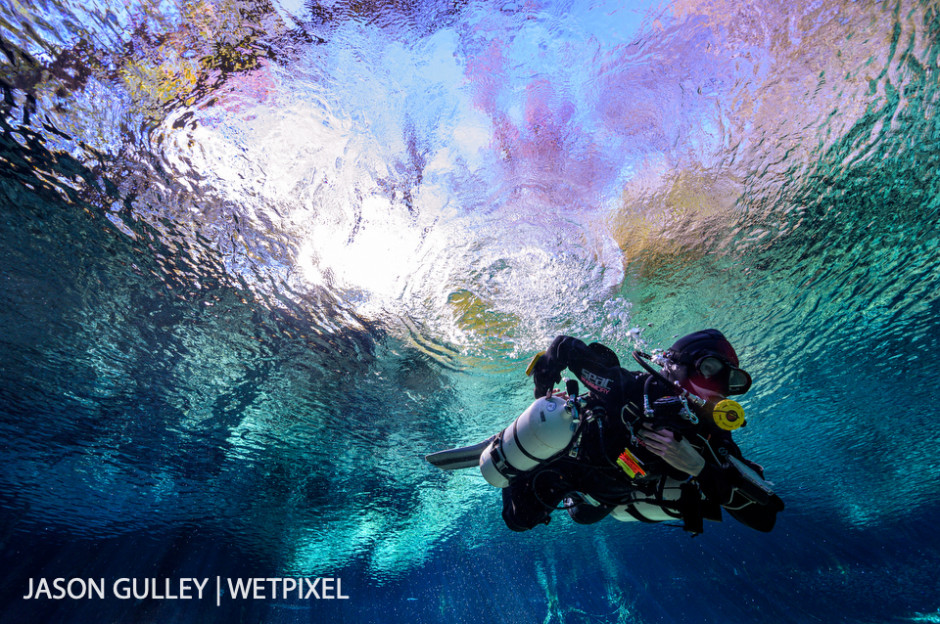
A diver makes final gear adjustments in the spring run before diving into Ginnie Spring - one of more than 1000 known springs in the State of Florida.
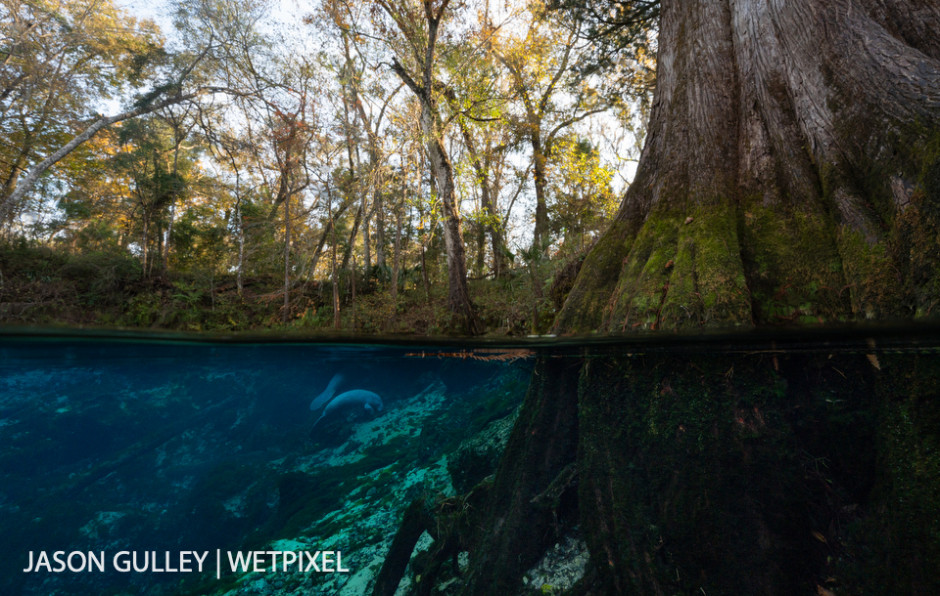
Manatees graze vegetation in the Fanning Spring spring vent. When ocean temperatures dip below 21°C in winter, manatees must migrate to warm water refuges, like Florida's groundwater-fed springs, to survive.

When not swimming, manatees use their two front flippers to "run" or "walk" along the bottom of Florida springs and waterways.
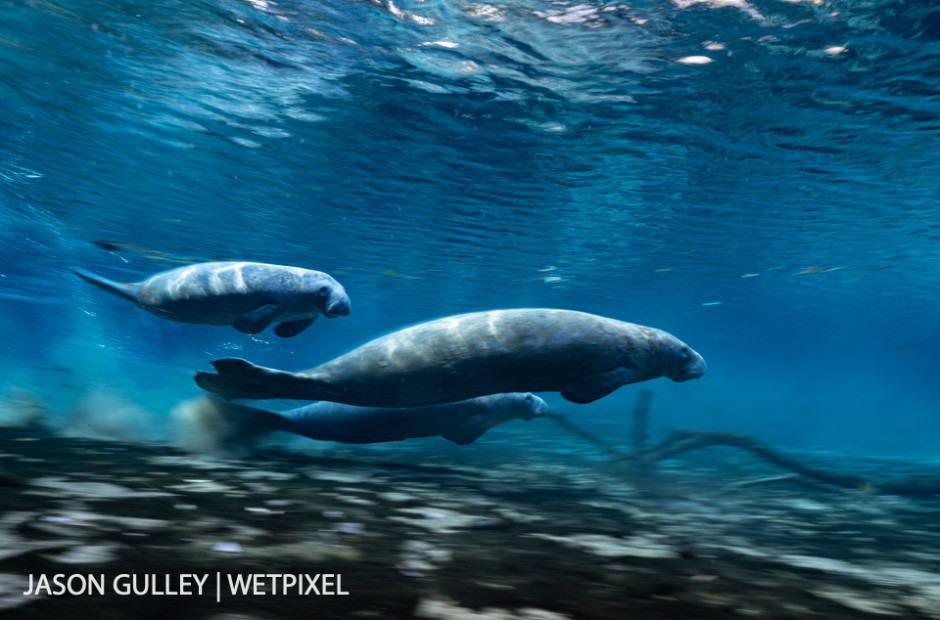
While manatees are often depicted as sedentary, they are graceful swimmers. Normally manatees will swim at speeds of 3-5 mph but can manage short bursts of nearly 20 mph.
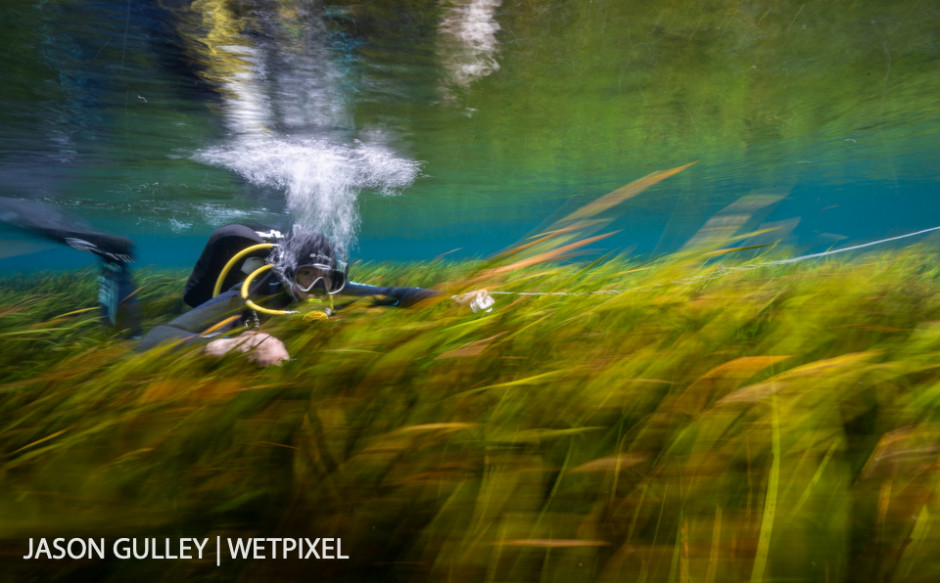
Rapid water flow whisks a diver through thickets of eelgrass in Florida's Rainbow River. Eelgrass is the foundation of a healthy spring ecosystem.
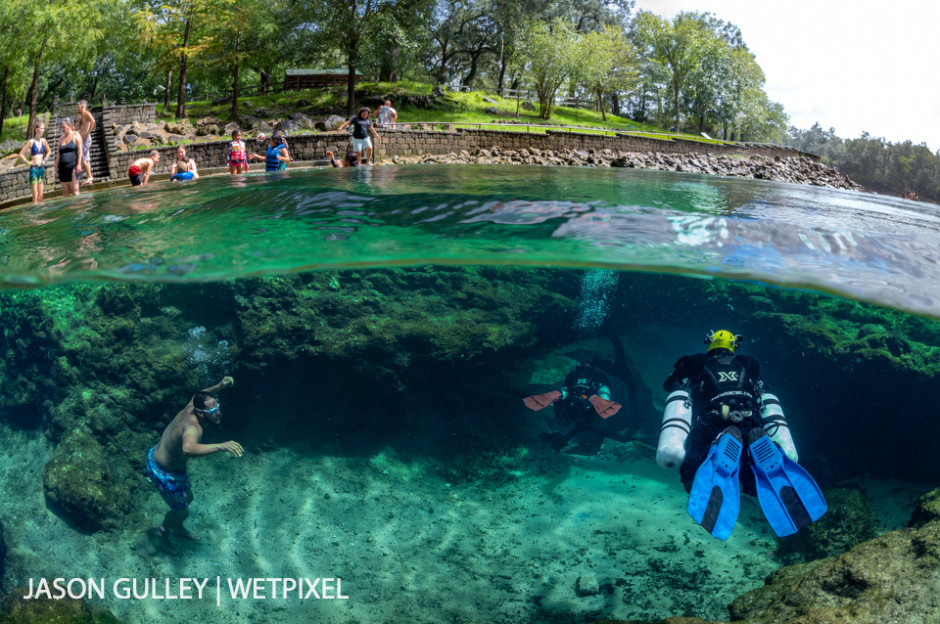
Cave divers enter the cave extending from Little River Spring, near Branford, Florida. Florida's springs are popular spots for swimmers as well as cave divers, especially in summer.

Massive cave springs like this one pour freshwater into estuaries along Florida's Gulf Coast. These springs support provide habitat for fish, birds, and manatees and create epic underground playgrounds.

Florida's groundwater gushes to the surface through hundreds of cave springs like this one at Ginnie Springs. This water originated as rainfall that fell decades ago.
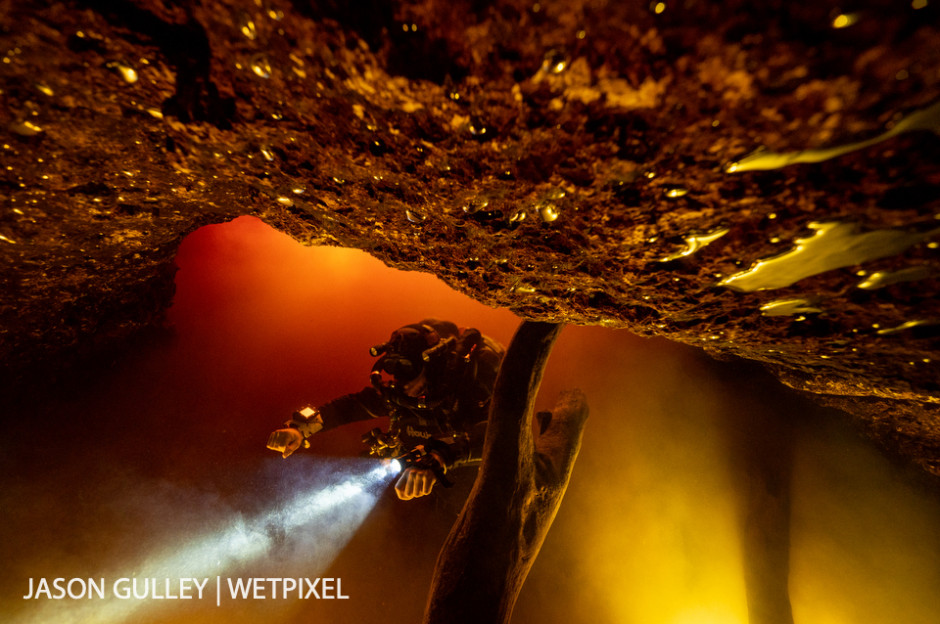
Orange tannins leached from vegetation rotting in the swamps of the Suwannee River's headwaters create atmospheric underwater "cloudscapes" where they mix with clear groundwater in springs.
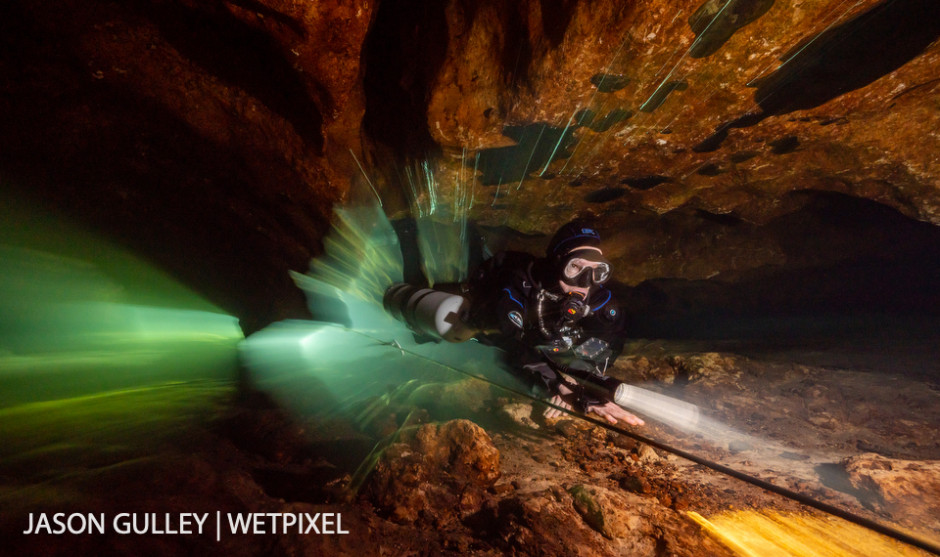
Hydrogeologist Dr. Patricia Spellman rides the flow out of a cave. Dr. Spellman uses observations from inside the aquifer to inform her research on how groundwater extraction impacts Florida’s springs.
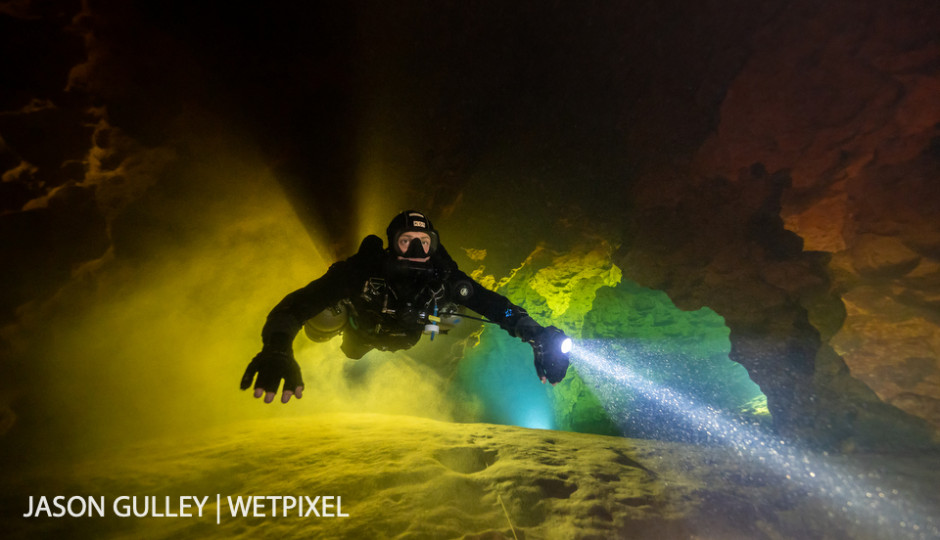
Cave diver Jaime De La Puerta Salazar fins through a layer of green-tinged groundwater sandwiched between tannic river water on the ceiling and the silty floor of Peacock Springs.

Cave diver and science volunteer Tim Senkovitch collects mineral deposit samples for a group of non-cave diving scientists who are waiting for him on the surface.
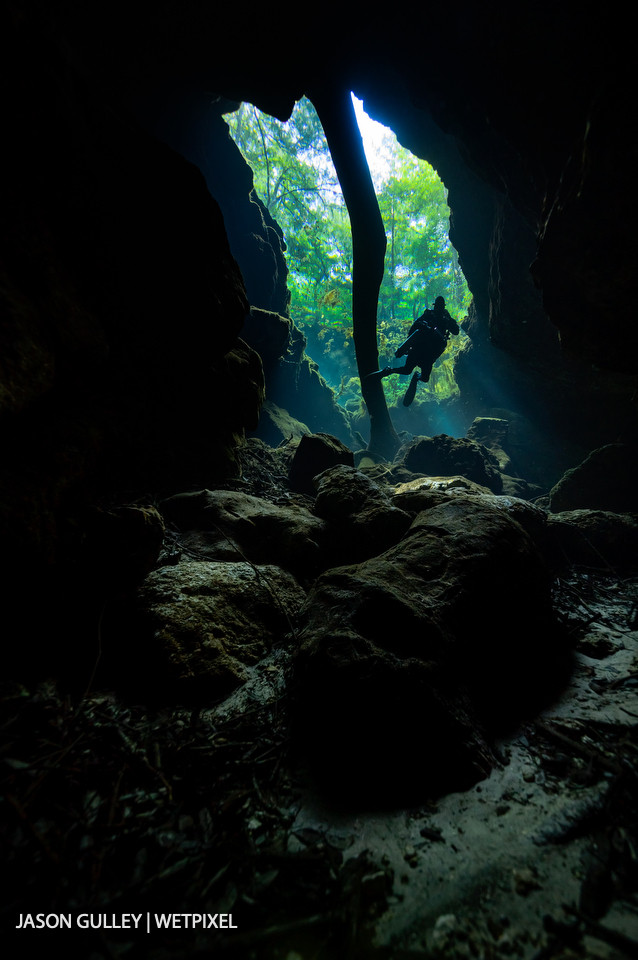
Tree leaves are visible through the clear water of a sinkhole in the Floridan aquifer. Visibility in Florida's caves often exceeds 30 meters.
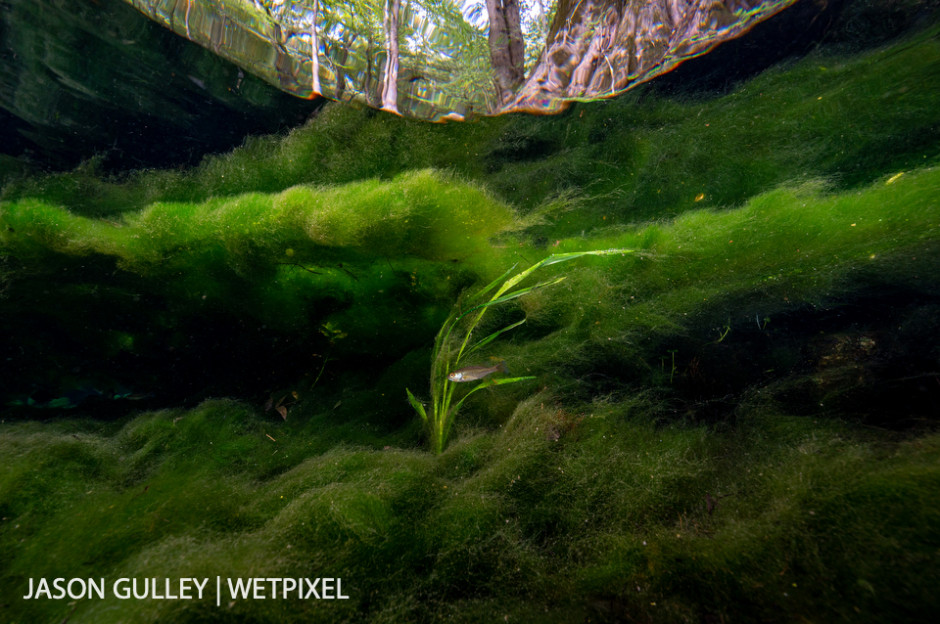
Thick mats of filamentous algae choke the few remaining stands of eelgrass in the run at Peacock Springs. Scientists think pollution and groundwater consumption are fueling algal growth.

A rebreather diver heads toward the surface following a 3-hour dive in booming underwater passages.